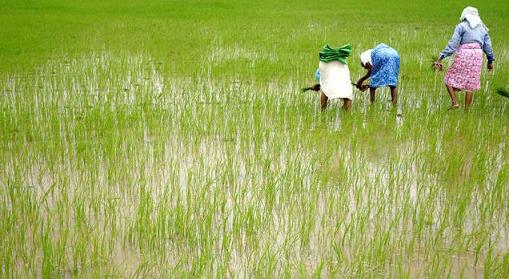Article courtesy: Business Line
Author: S. Gopikrishna Warrier
Farming produces food; and also greenhouse gases — carbon dioxide, methane and nitrous oxide. The process of reducing the emission of greenhouse gases from farms could adversely affect food production and food security of countries.
In South Asia, the trade-off could mean reduction in the incomes of already poor farmers and food security of countries. Agriculture’s contribution in the total greenhouse gas emission basket is estimated at 12.5 per cent, but the sector supports more than half of the population in India, Nepal, Bangladesh and Sri Lanka.

Changing paddy-growing methods can curb methane emissions — K.K. Mustafah
The number of families that derive their livelihood from agriculture is also disproportionately high when compared to the sector’s contribution to the national GDPs. In India, for instance, agriculture contributes 14 per cent to the GDP, while it supports about 55 per cent of the population.
Discussions on agriculture entered rather late into the international climate change negotiations related to the United Nations Framework Convention on Climate Change (UNFCCC). There is scope for both adaptation and mitigation in the agricultural sector.